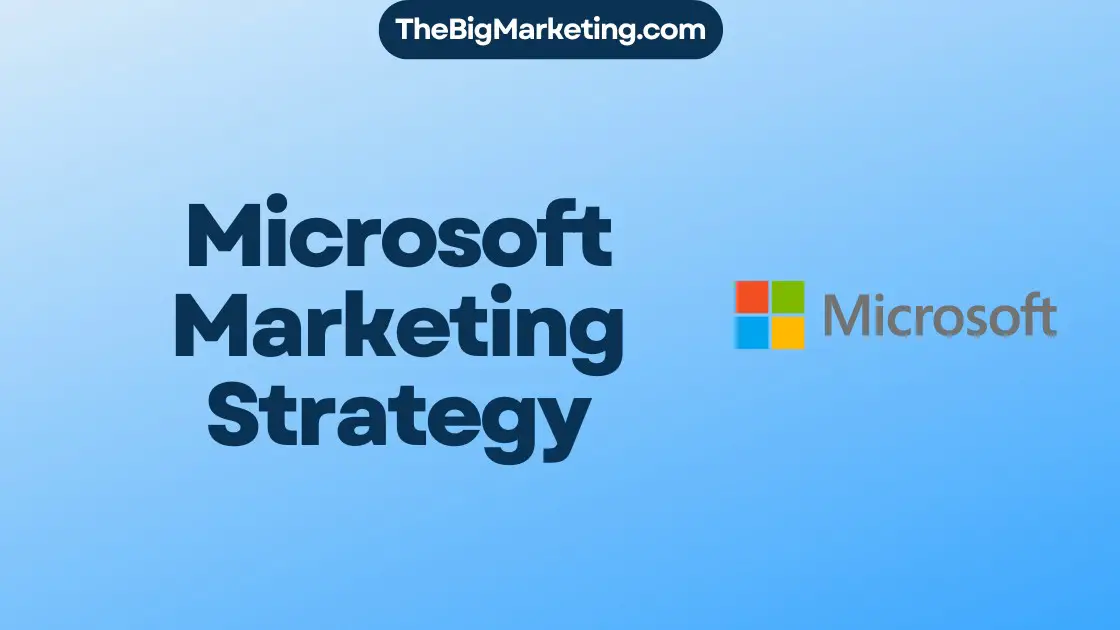SEA Marketing, also known as search engine advertising, is a form of paid marketing that helps businesses elevate their online presence by displaying ads at the top of search engine results pages. With SEA, marketers bid on relevant search queries and pay for each click their ad receives, making it a type of pay-per-click (PPC) advertising. Unlike SEO, which focuses on improving organic search results, SEA is designed to provide immediate visibility and drive targeted traffic to websites.
SEA is an integral part of SEM, or search engine marketing, which encompasses both SEO and SEA strategies. By leveraging SEA, businesses can effectively reach their desired audience, increase brand visibility, and drive conversions.
Key Takeaways:
- SEA Marketing is a paid advertising strategy that boosts visibility on search engine results pages.
- Marketers bid on relevant search queries and pay for each click their ad receives.
- SEA is part of SEM and differs from SEO, which focuses on organic search optimization.
- Using SEA allows businesses to quickly reach their target audience and drive conversions.
- Key success factors in SEA include keyword research, ad quality, and campaign optimization.
Understanding SEA Marketing and Its Meaning
SEA marketing, also known as search-engine-advertising, is a vital strategy for businesses to maximize their online presence and drive relevant traffic to their websites. In this section, we will delve into the core concepts of SEA marketing and outline its significance in the realm of PPC advertising.
SEA marketing involves paying for ads in search engines like Google and Bing to ensure prominent placement in search engine results pages. It operates on a pay-per-click model, wherein advertisers bid on keywords related to their products or services. When a user searches for a specific keyword, the search engine displays relevant ads, and the advertiser is charged only when their ad gets clicked.
Unlike search engine optimization (SEO), which focuses on organic search results, SEA marketing provides businesses with immediate visibility and control over their advertising campaigns. With SEA marketing, businesses have the opportunity to capture the attention of their target audience at the very moment they are actively searching for a specific product or service.
SEA marketing has gained immense popularity and effectiveness in recent years. In fact, it has surpassed organic search as the top revenue-driving method in online marketing. This shift demonstrates the increasing emphasis businesses place on search-engine-advertising and its ability to deliver tangible results.
Advantages of SEA Marketing
The benefits of SEA marketing are vast and extend beyond immediate visibility. Let’s explore a few advantages that make it a powerful tool in a business’s digital marketing arsenal:
- Targeted Advertising: SEA marketing allows businesses to precisely target their ads to specific demographics, locations, and search queries. This precision reduces wasted ad spend and increases the likelihood of converting potential customers.
- Increased Brand Visibility: With prominent ad placement on search engine results pages, businesses gain enhanced brand visibility and awareness among their target audience.
- Higher ROI: SEA marketing offers an excellent return on investment (ROI) due to its cost-effective nature. Advertisers only pay when their ads are clicked, ensuring that every dollar spent is driving potential customers to their website.
- Conversion Opportunities: By appearing in search results when users actively search for relevant keywords, SEA marketing presents businesses with immediate opportunities for conversions and sales.
- Measurable Results: SEA marketing provides robust analytics and tracking tools to measure the performance and effectiveness of advertising campaigns. This data allows businesses to refine and optimize their strategies for better results.
SEA marketing continues to revolutionize the digital advertising landscape. With its ability to deliver targeted, measurable, and cost-effective results, it has become an indispensable tool for businesses looking to establish a strong online presence and drive revenue growth.
How Does SEA Marketing Work?
To engage in SEA marketing on Google, businesses utilize Google Ads (previously AdWords), whereas Microsoft Advertising is the platform for Bing. Marketers bid on relevant search keywords and compete for their ads to appear in search results. The positioning and performance of the ads are determined by a ranking system known as Ad Rank. Ad Rank takes into account the bid amount, Quality Score of the website, and other factors, which are recalculated for each auction.
The success of SEA marketing relies on understanding how the bidding process and ranking system work. When a user searches for a query, an auction is triggered, and the search engine evaluates all the relevant ads eligible to appear. The position of the ads is determined based on Ad Rank, with higher-ranked ads being placed at the top of the search results. Ad Rank is calculated by multiplying the bid amount with the site’s Quality Score.
The bid amount is the maximum amount a business is willing to pay when a user clicks on their ad. A higher bid amount increases the chances of appearing in top positions. However, the bid amount is not the sole factor in determining ad placement. The Quality Score of the website also plays a crucial role.
The Quality Score is an evaluation of the overall quality and relevance of a website’s ad and landing page. It considers factors such as the ad’s expected click-through rate, ad relevance, and the landing page experience. Websites with a higher Quality Score have better chances of achieving a higher Ad Rank, even with a lower bid amount.
Ad Rank is not only important for ad placement but also for determining the actual cost per click that a business pays. The actual cost per click is calculated by dividing the Ad Rank of the ad below by the Quality Score of the business and adding $0.01. Essentially, the more relevant and high-quality the ad and landing page are, the lower the cost per click.
By understanding the workings of SEA marketing, businesses can develop effective bidding strategies to optimize their ad placement, increase visibility, and generate more clicks and conversions.
Different Types of SEA Advertising
In the world of SEA advertising, businesses have a variety of options to choose from to effectively reach their target audience. Let’s explore the different types of SEA advertising and their unique features.
Text Ads
Text ads are the most common form of SEA advertising and appear at the top of search engine results. These ads are typically displayed as a headline followed by a brief description. They blend seamlessly with organic search results, making them highly visible to users.
Shopping Ads
Shopping ads are another popular type of SEA advertising that display products directly in search engine results. When users search for a particular product, shopping ads featuring relevant products, with images and prices, are shown. This allows businesses to showcase their products visually and attract potential customers directly from the search results page.
Display Ads
Display ads are graphical advertisements that are shown on websites across the internet. These ads can include images, videos, animations, and interactive elements. Display ads can be highly targeted, reaching specific audience demographics and interests. They are an effective way to raise brand awareness and drive traffic to websites.
Discovery Ads
Discovery ads are a relatively new type of SEA advertising that can be displayed on various Google platforms, including YouTube, Gmail, and the Discover feed. These ads are designed to blend seamlessly into the user experience, providing a native and non-intrusive advertising experience. Discovery ads leverage user preferences and behavior to deliver highly targeted ad experiences.
Video Ads
Video ads are a powerful form of SEA advertising that are shown on platforms like YouTube and other video partner sites. With the rise in popularity of video content, video ads allow businesses to engage and captivate audiences with compelling visual storytelling. Video ads can be skippable or non-skippable and offer a unique opportunity to showcase products, share brand stories, and drive conversions.
Each type of SEA advertising serves a specific purpose and offers unique benefits to businesses. By utilizing a combination of these ad formats, businesses can create a comprehensive SEA marketing strategy that maximizes their reach and drives results.
The Importance of Keyword Research in SEA Marketing
Keyword research plays a vital role in the success of SEA marketing campaigns. By understanding the search queries used by their target audience, marketers can optimize their ads to appear in the right place at the right time. By identifying higher-traffic keywords and incorporating them into their campaigns, marketers can increase their visibility and attract more potential customers. Additionally, by targeting less competitive keywords, marketers can achieve cost-effective results and maximize their return on investment (ROI).
To conduct effective keyword research for SEA online marketing, marketers can utilize powerful tools such as Google’s Keyword Planner. This tool provides valuable insights into the popularity and competition of various keywords, helping marketers make informed decisions about which keywords to target. By selecting keywords that align with their business goals and resonate with their target audience, marketers can create compelling ads that drive engagement and conversions.
Effective PPC (pay-per-click) campaigns rely on in-depth keyword research. It involves identifying high-value, intent-driven keywords that are most likely to lead to conversions. By understanding the search intent behind specific keywords, marketers can tailor their ad content to deliver relevant information to users actively seeking related products or services. This strategic approach not only increases the chances of conversions but also enhances the overall user experience.
Choosing the right keywords in SEA marketing is all about finding a balance between higher-traffic keywords and less competitive ones. While targeting highly popular keywords can generate more impressions and clicks, it may also lead to higher competition and costs. On the other hand, focusing solely on less competitive keywords may limit reach and reduce potential conversions. A well-researched keyword strategy strikes the perfect balance, ensuring that ads are shown to the right audience while maximizing the campaign’s performance.
Overall, keyword research is an essential element of SEA marketing. It enables marketers to optimize their campaigns by targeting the most relevant and high-value keywords. By investing time and effort into keyword research, businesses can drive targeted traffic, increase conversions, and achieve their marketing goals.
| Benefits of Keyword Research in SEA Marketing |
|---|
| 1. Increased visibility and reach |
| 2. Higher chances of conversions |
| 3. Cost-effective campaign optimization |
| 4. Better targeting of the right audience |
Benefits of SEA Marketing
SEA marketing offers numerous benefits for businesses looking to enhance their online advertising strategy. By incorporating targeted ads, businesses can achieve quick visibility, resulting in increased sales and an expanded customer base.
One of the key advantages of SEA marketing is its ability to deliver quick results. Unlike other forms of marketing that may require substantial time and effort to yield outcomes, SEA marketing generates immediate visibility. By placing ads at the top of search engine results pages, businesses can ensure that their brand and offerings are prominently displayed to potential customers.
Additionally, SEA marketing allows advertisers to target their audience with precision. By selecting specific keywords and demographics, businesses can optimize ad visibility to reach their desired customer base. This targeted approach ensures that ads are shown to individuals who are actively searching for relevant products or services, increasing the likelihood of conversions.
| Benefits of SEA Marketing |
|---|
| Quick Results |
| Increased Visibility |
| Targeted Ads |
| High ROI |
| Conversion Rate |
| Revenue Growth |
Moreover, SEA marketing offers a high return on investment (ROI). According to Google, businesses can expect to generate $2 in revenue for every dollar spent on PPC advertising. This makes SEA marketing a cost-effective strategy for driving revenue growth and achieving business objectives.
Furthermore, SEA marketing has been found to be highly effective in terms of conversion rates. Site visitors from SEA paid-search traffic are 1.5 times more likely to convert compared to other sources. This increased conversion rate directly contributes to revenue growth and provides tangible results for businesses.
In conclusion, SEA marketing provides businesses with a wealth of benefits, including quick results, increased visibility, targeted ads, high ROI, improved conversion rates, and revenue growth. By leveraging SEA marketing strategies, businesses can elevate their online presence, expand their customer base, and achieve their marketing goals.
How to Optimize SEA Campaigns for Success
Optimizing your SEA campaigns is essential for driving optimal results. By focusing on various factors like ad quality, ad extensions, keyword quality factor, targeting options, and remarketing lists, you can enhance the performance of your campaigns.
1. Ad Quality
Ad quality plays a crucial role in capturing the attention of searchers. Creating relevant and compelling ads that align with user intent is key to boosting ad performance. Ensure that your ad copy is concise, engaging, and clearly communicates the value or benefits of your product or service.
2. Ad Extensions
Leveraging ad extensions can significantly improve your ad’s visibility and performance. Consider adding phone numbers, additional links, or location information to your ads. These extensions provide more valuable information to potential customers and increase the chances of driving clicks and conversions.
3. Keyword Quality Factor
The keyword quality factor is determined by factors such as relevance and expected click-through rate. Conduct thorough keyword research to identify high-value keywords that align with your target audience’s search queries. Optimize your ad campaigns by including these keywords in your ad copy and landing pages.
4. Targeting Options
Precise audience targeting is essential for maximizing the effectiveness of your SEA campaigns. Take advantage of targeting options such as location, demographics, and interests to narrow down your audience and ensure your ads are visible to the right people at the right time.
5. Remarketing Lists
Remarketing lists allow you to target users who have previously interacted with your website or shown interest in your product or service. By tailoring your ads specifically to these users, you can increase the chances of conversion. Create custom remarketing lists based on user behavior and design targeted ads to reconnect with potential customers.
By implementing these optimization strategies, you can enhance the effectiveness of your SEA campaigns and drive better results. Remember to regularly monitor and analyze the performance of your campaigns to make data-driven adjustments and improvements.
| Optimization Strategy | Benefits |
|---|---|
| Ad Quality | Improves ad relevance and captures user attention |
| Ad Extensions | Increases ad visibility and click-through rates |
| Keyword Quality Factor | Enhances ad performance and click-through rates |
| Targeting Options | Reaches the right audience at the right time |
| Remarketing Lists | Targets users with previous engagement for higher conversions |
Can Businesses Manage SEA In-House or Outsource to an Agency?
When it comes to managing Search Engine Advertising (SEA), businesses have two options: handling it in-house or outsourcing to a Pay-Per-Click (PPC) agency. While managing SEA campaigns internally is possible, hiring a PPC agency can provide several advantages. PPC agencies bring valuable knowledge, experience, and tools to the table, ensuring professional campaign management and delivering optimum results. They specialize in performance tracking and reporting, providing valuable insights into the effectiveness of SEA marketing.
By outsourcing to a PPC agency, businesses can save time and focus on other important tasks while leaving the complexities of SEA management in the hands of experts. These agencies stay up to date with evolving algorithms, best practices, and industry trends, enabling them to optimize campaigns effectively. Their expertise and experience allow them to identify the most appropriate targeting options and remarketing strategies, maximizing the performance and impact of SEA campaigns.
Furthermore, working with a PPC agency ensures comprehensive performance tracking and reporting. These agencies utilize advanced analytics tools to monitor campaign effectiveness, measure conversions, and assess return on investment (ROI). In-depth reports provide meaningful insights, allowing businesses to make data-driven decisions and refine their SEA strategy accordingly. Transparent reporting allows for a clear understanding of campaign performance, enabling businesses to evaluate the success of their marketing efforts.
Benefits of Outsourcing SEA Management to a PPC Agency
Outsourcing SEA management to a PPC agency offers numerous benefits:
- The expertise and knowledge of professionals who specialize in SEA marketing
- Access to advanced tools and technologies for efficient campaign management
- Optimized targeting options and remarketing strategies
- Comprehensive performance tracking and reporting for data-driven decision-making
- Savings in time and resources, enabling businesses to focus on core operations
By partnering with a reliable PPC agency, businesses can leverage their knowledge and experience to achieve successful SEA campaigns, driving targeted traffic, increasing conversions, and ultimately boosting revenue.
Table: Comparison of SEA In-House Management vs. Outsourcing to a PPC Agency
| Factors | In-House Management | Outsourcing to a PPC Agency |
|---|---|---|
| Knowledge and Expertise | Limited to internal team’s skills and experience | Access to professionals specialized in SEA marketing |
| Campaign Optimization | Requires continuous learning and monitoring of algorithms and market trends | Efficient campaign optimization driven by agency expertise |
| Performance Tracking and Reporting | Internal tracking and reporting resources needed | Comprehensive performance tracking and reporting by the PPC agency |
| Time and Resource Commitment | Significant time and resources required | Saves time and resources for other important business tasks |
Success Metrics and Evaluating SEA Campaigns
Evaluating SEA campaigns is essential for assessing their overall effectiveness and optimizing performance. By analyzing various success metrics, businesses can gain valuable insights into the reach, relevance, and profitability of their SEA ads.
Impressions
Impressions refer to the number of times an ad is displayed to users. This metric gives an indication of your ad’s visibility and reach. Higher impressions indicate a broader exposure to potential customers.
Clicks
Clicks measure the number of times users have clicked on your ad. It shows the level of engagement and interest your ad generates. Increasing clicks implies a greater likelihood of driving traffic to your website or landing page.
Click-Through-Rate (CTR)
The click-through-rate is the ratio of the number of clicks to the number of impressions. It indicates the percentage of users who clicked on your ad after seeing it. A higher CTR suggests ad relevancy and strong call-to-action.
Cost-Per-Click (CPC)
CPC represents the average cost incurred per click on your ad. This metric helps evaluate the financial efficiency of your campaign. Lower CPC indicates better cost management and optimizes the budget allocation.
Conversions
Conversions measure the number of desired actions completed by users, such as purchases, sign-ups, or form submissions. This metric directly reflects the success of your campaign in generating valuable customer interactions.
Cost-to-Sales Ratio
The cost-to-sales ratio compares the total cost of your SEA campaign to the revenue generated. It provides insights into the profitability of your ads. A lower cost-to-sales ratio indicates a more efficient use of resources and a higher return on investment.
Regular evaluation of these metrics is crucial to determine the effectiveness of your SEA campaigns. By tracking and analyzing these success metrics, businesses can make informed decisions about budget allocation, ad optimization, and overall campaign adjustments.
| Metric | Definition |
|---|---|
| Impressions | Number of times an ad is displayed to users |
| Clicks | Number of times users have clicked on the ad |
| Click-Through-Rate (CTR) | Ratio of clicks to impressions |
| Cost-Per-Click (CPC) | Average cost incurred per click on the ad |
| Conversions | Number of desired actions completed by users |
| Cost-to-Sales Ratio | Comparison of total campaign cost to revenue generated |
The Cost of SEA Marketing
SEA marketing costs are based on a pay-per-click (PPC) model, where businesses only pay for actual clicks on their ads. This pricing structure provides businesses with greater control over their advertising budget and ensures that they are only paying for engagement from potential customers.
When setting up an SEA campaign, marketers have the option to determine a maximum bid for each click. The maximum bid represents the highest amount a marketer is willing to pay for a single click on their ad. This bid amount is crucial in determining the visibility of the ad in search engine results pages (SERPs).
In addition to the maximum bid, businesses can also set a daily budget to control their advertising costs. The daily budget allows marketers to limit the amount of money spent on PPC advertising each day. This is particularly useful for businesses with strict budget constraints.
Alternatively, marketers can determine a maximum monthly budget, which provides even greater control over the overall spend on SEA marketing.
The cost of SEA marketing can vary depending on several factors. Competition plays a significant role in determining the cost, as bidding on highly competitive keywords can drive up the price per click. Ad quality is another important factor, as ads that are more relevant and provide a better user experience tend to have lower costs.
It is crucial for businesses to set realistic budgets that align with their goals and ensure a positive return on investment (ROI). Investing in thorough keyword research, ad optimization, and targeted audience selection can help businesses make the most of their SEA marketing budget and maximize their ROI.
Overall, SEA marketing provides businesses with an effective advertising strategy that allows them to control costs while reaching a targeted audience. By carefully managing bids and budgets, businesses can optimize their ad spend and achieve their marketing objectives.
When is SEA Marketing the Right Choice for Your Business?
SEA marketing, also known as search engine advertising, can be an effective online advertising strategy for businesses looking to achieve quick visibility, increased sales, and an expanded customer base. By using targeted ads, businesses can reach specific audiences and generate immediate results.
One of the primary advantages of SEA marketing is its ability to provide quick visibility. Unlike organic search engine optimization (SEO) that can take time to show results, SEA ads appear at the top of search engine results pages, giving businesses immediate exposure to potential customers.
Furthermore, SEA marketing allows businesses to target specific audiences. By bidding on relevant keywords, businesses can ensure that their ads are displayed to users searching for specific products or services. This targeted approach increases the chances of reaching potential customers who are more likely to convert.
In addition to quick visibility and targeted ads, SEA marketing has proven to be highly effective in driving increased sales. By strategically placing ads in front of a relevant audience, businesses can boost their conversion rates and generate more revenue. Studies have shown that businesses that implement SEA marketing experience a noticeable uptick in sales.
Moreover, SEA marketing is an excellent way for businesses to expand their customer base. By reaching a wider audience through search engine ads, businesses can attract new customers who may not have been aware of their products or services. This expanded reach can lead to long-term growth and increased brand recognition.
Before implementing SEA marketing, it is crucial for businesses to consider their goals, budget constraints, and the competitive landscape. While SEA marketing can provide quick results and increased visibility, it requires financial investment in the form of pay-per-click advertising. Therefore, it is essential for businesses to determine if they have the necessary budget for paid advertising and if SEA marketing aligns with their overall marketing strategy.
In conclusion, SEA marketing can be a powerful tool for businesses looking to achieve quick visibility, target specific audiences, and increase sales. With the ability to expand the customer base and generate immediate results, SEA marketing should be considered by businesses as part of their online advertising strategy.
Conclusion
SEA marketing is a powerful digital advertising strategy that businesses can utilize to increase their visibility, target specific audiences, and drive revenue growth. With its ability to deliver quick results and provide a high return on investment (ROI), SEA marketing has become an essential tool for businesses looking to maximize their online presence.
Whether businesses choose to manage SEA campaigns in-house or outsource to a PPC agency, there are valuable SEA marketing tips to keep in mind. Firstly, evaluating campaign performance is crucial to optimize strategies and make data-driven decisions. Tracking metrics such as impressions, clicks, click-through-rate, conversions, and cost-to-sales ratio can provide valuable insights for campaign improvement.
Additionally, optimizing ad quality, utilizing ad extensions, targeting specific keywords, and leveraging remarketing lists are essential tactics to maximize the effectiveness of SEA marketing. These strategies can help businesses reach their desired audience, increase conversion rates, and drive revenue growth.
By implementing these SEA marketing tips and continuously monitoring and refining strategies, businesses can make the most of their SEA marketing efforts and achieve long-term success in the digital advertising landscape.






